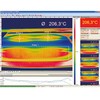E-Mail Software Information
E-mail software allows users to send e-mail, a form of electronic messaging that allows computer users to communicate. E-mail, an abbreviation for electronic mail, can be sent in large quantities as part of a company’s marketing communications program. Often, these applications or programs are called e-mail marketing software or bulk e-mail software. Both types of products can be used to send newsletters, product announcements, and other promotional materials to an opt-in list of e-mail subscribers. Some e-mail software can also be used send to send unsolicited e-mail or "spam". These unwanted communications may target individual users or entire mailing lists. Most e-mail software includes a database for storing contact information, campaign statistics, and messaging history. An application’s user interface (UI) provides features for designing, implementing, and managing e-mail campaigns and other direct marketing efforts. Application features include data entry, contact importing, messaging, archiving, and reporting. E-mail software that provides templates, personalization, and hypertext markup language (HTML) editing is also available. Products vary widely in terms of cost and capabilities. Off-the-shelf or turnkey software packages carry product specifications for operating system (OS) and memory. The number of licenses to purchase is an important consideration with enterprise-level solutions. Some e-mail software suppliers charge a monthly fee for maintenance and/or customer support. There are many different types of e-mail software. Standalone bulk e-mail software may require an SMTP server for contacting opt-in subscribers. Simple mail transfer protocol (SMTP), an Internet standard for electronic mail transmissions, enables bulk mailers to send e-mail from a message user agent (MUA) to a mail server (MSA). From there, the messages are delivered to one or more mail transfer agents (MTA) for delivery to the end-user’s email client. Related technologies include POP3, IMAP, SSL and S/MIME authentication. Post office protocol, version 3 (POP) is an application-layer Internet standard protocol that local e-mail clients use to retrieve messages from a remote server over a TCP/IP connection. Internet message access protocol (IMAP) is a separate but popular standard for e-mail retrieval. Selecting e-mail software may require a basic understanding of SSL and S/MIME authentication. Secure sockets layer (SSL) is a set of cryptographic protocols that provide secure communications over the Internet. Secure/multi-purpose Internet mail extensions (S/MIME) is a standard for public key encryption and the signing of MIME-encapsulated e-mail. Multi-purpose Internet mail extensions (MIME) extends e-mail formatting to support non-ASCII character sets, non-text attachments, and message bodies with multiple parts. E-mail software with features such as spam filtering, web mail, and shortcut keys is also available.



